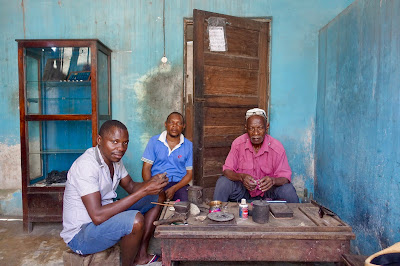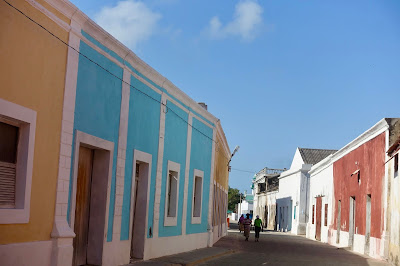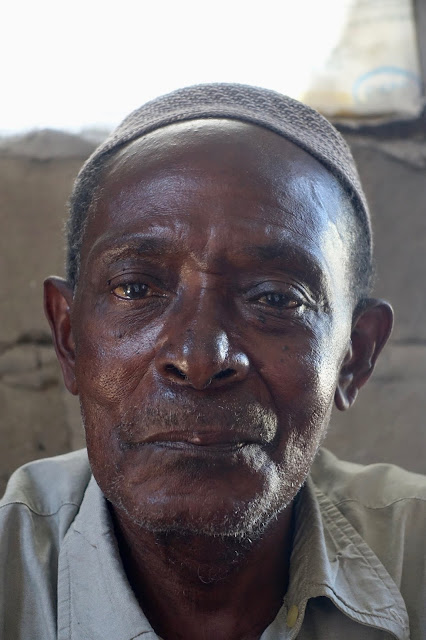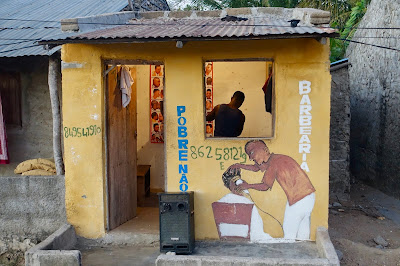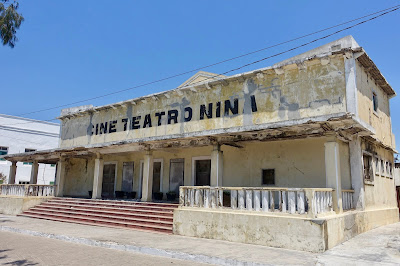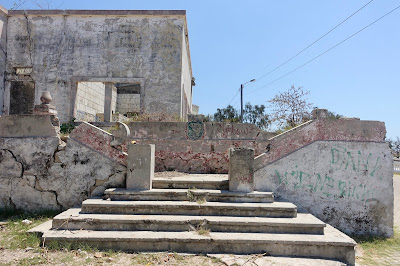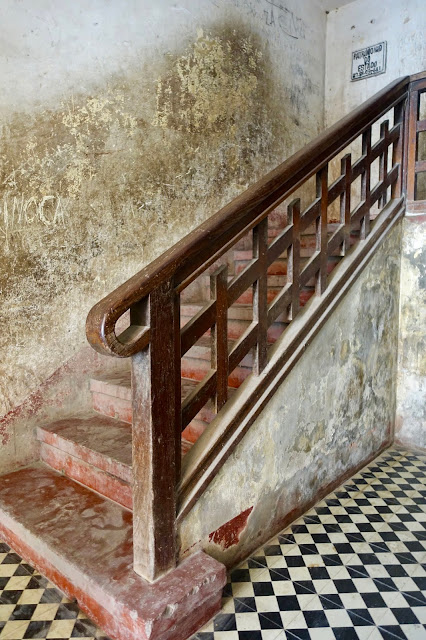Maputo is the capital city of Mozambique and home to 1.2 million people with a further million residing in the adjacent satellite city of Matola. It is also home to a fine collection of Art Deco buildings constructed during the Portuguese colonial period when the city was known as Lourenço Marques. Maputo's deco buildings include cinemas, a radio station, commercial and residential properties and a stunning cathedral. The style remained popular here well into the 1950's, significantly longer than in most other countries. A local aficionado explains this in part by Portuguese settlers needing to work for several years before being able to build a home and then choosing a style that had been popular when they left Europe. Perhaps.
I have not been able to locate documentary information in English about several of the buildings featured in this post and even Portuguese language websites do not carry full details of the architects or dates of construction. This is not peculiar to Mozambique and there are Art Deco and modernist buildings across the globe for which reliable information is unavailable. If anyone reading can add something please do so in the comments space below!
As in many major cities, Maputo had a number of Art Deco cinemas. I was able to see the exterior of two of them during my short stay. Cine Africa on Avenida 24 Julho, began life as the Cinema Manuel Rodriquez. Built in 1948 in classic Art Deco style it has a fabulous facade complete with speed-lines, a narrow central glazed pillar or "thermometer" topped by a "screw" and flagpole. The cinema appears to have been re-painted recently and has a crisp, clean, well cared for appearance. It could seat 1,500 people but during the colonial period audiences were segregated. The last film was shown in 2004 and the building is now the base for the National Ballet Company. Cine Africa is a greta example of a late Art Deco building - from it's appearance it could easily date from the early 1930's rather than the end of the following decade.
The Scala on Avenida 25 de Setembro still operates as a cinema. Built in 1931 with a seating capacity of 1300. The original owners were the Transvaal Delagoa Bay Investment Company. Another South African company, South African Cinema Lda provided the films. Occupying space over two floors, the cinema's blue and white facade and stylised lettering carrying the Scala name make the building stand out on the Avenida. The former pastelaria of the same name seems to have been closed but film fans can still take advantage of a bar with outdoor seating on the first floor terrace.
 |
| Scala Cinema |
Whilst Art Deco cinemas can be found all over the world the same is not true of religious buildings. Maputo is a notable exception to this with both a Catholic Cathedral and a Hindu Temple built in the style. The Cathedral, Catedral de Nossa Senhora de Imaculada Conceição was designed by a civil engineer, Marcial Simoes de Freitas e Costa who took particular inspiration from Pardal Monteiro's church in Lisbon. The brilliant white Cathedral is constructed from concrete and cement. It is approached by a series of steps that add to the visual impact, contrasting horizontal and vertical arrangements. The foundation stone was laid in 1936 and construction completed in 1944.
Maputo has been home to a Hindu community for many years. In 1932 The Association of Hindu Workers was formed and their temple, Bharat Samaj Ved Mandir was inaugurated in 1938. The facade displays both Hindu and Art Deco influences with ziggurats, geometric shapes and use of the rule of three principle. I do not have details of the architect.
 |
| Bharat Samaj Ved Mandir, Hindu Temple, inaugurated 1938 |
 |
| National School of Dance |
 |
| National Organisation of teachers building |
 |
| Art Deco high school |
There are also a number of Art Deco buildings in Maputo that were designed to fulfil educational functions. I spotted three during my stay - the National School of Dance, the head quarters of the National Organisation of Teachers and a stunning high school. All three display classic deco motifs and combine a white exterior with detailing in a different colour - red, green and blue respectively. Again, no details so just enjoy the pictures!
Clube Ferroviario (The Railway Club) was inaugurated in 1943. Occupying a prominent corner plot it's presence is emphasised by its white facade, green speed-lines and intricate detailing on the doors. Formerly a swamp, this part of the city is prone to flooding and at least one commentator gives this as the reason for the raised entrance. An over zealous official came out and told me to stop put my camera away but the picture below gives a little idea of its grandeur.
The Escola-Hotel Andalucia, formerly Hotel Avis, built in 1946 is another grand deco building. I like its asymmetrical design, crittal windows with metal detailing on the panes, flag posts secured with an Art Deco "screw" feature and most of all those fabulous balconies that cover the facade. The hotel was sold in 2012 and immediately closed for renovation. The external information board says that the works began in 2013 and were to last for one year. They are not yet complete and there was no sign of activity at the time of my visit. Let's hope this beautiful building is not left to fall into disrepair - several of the windows are already broken.
Clube Ferroviario (The Railway Club) was inaugurated in 1943. Occupying a prominent corner plot it's presence is emphasised by its white facade, green speed-lines and intricate detailing on the doors. Formerly a swamp, this part of the city is prone to flooding and at least one commentator gives this as the reason for the raised entrance. An over zealous official came out and told me to stop put my camera away but the picture below gives a little idea of its grandeur.
The Escola-Hotel Andalucia, formerly Hotel Avis, built in 1946 is another grand deco building. I like its asymmetrical design, crittal windows with metal detailing on the panes, flag posts secured with an Art Deco "screw" feature and most of all those fabulous balconies that cover the facade. The hotel was sold in 2012 and immediately closed for renovation. The external information board says that the works began in 2013 and were to last for one year. They are not yet complete and there was no sign of activity at the time of my visit. Let's hope this beautiful building is not left to fall into disrepair - several of the windows are already broken.
 |
| Window detail, Escola-Hotel Andalucia, completed in 1946 |
Three days is not enough to see all of Maputo's architectural treasures and to fit in the many other things that I wanted to do. However, I did manage to cover a lot of ground, see some of the most significant buildings in the central part of the city and whet my appetite to see more in the future. I will blog separately about Maputo's marvellous markets, surprising jazz history and fascinating local neighbourhoods but in the meantime, a little more Art Deco...
You might also like Ilha de Mocambique- the people in the street
You can see more pictures of Mozambique here
















